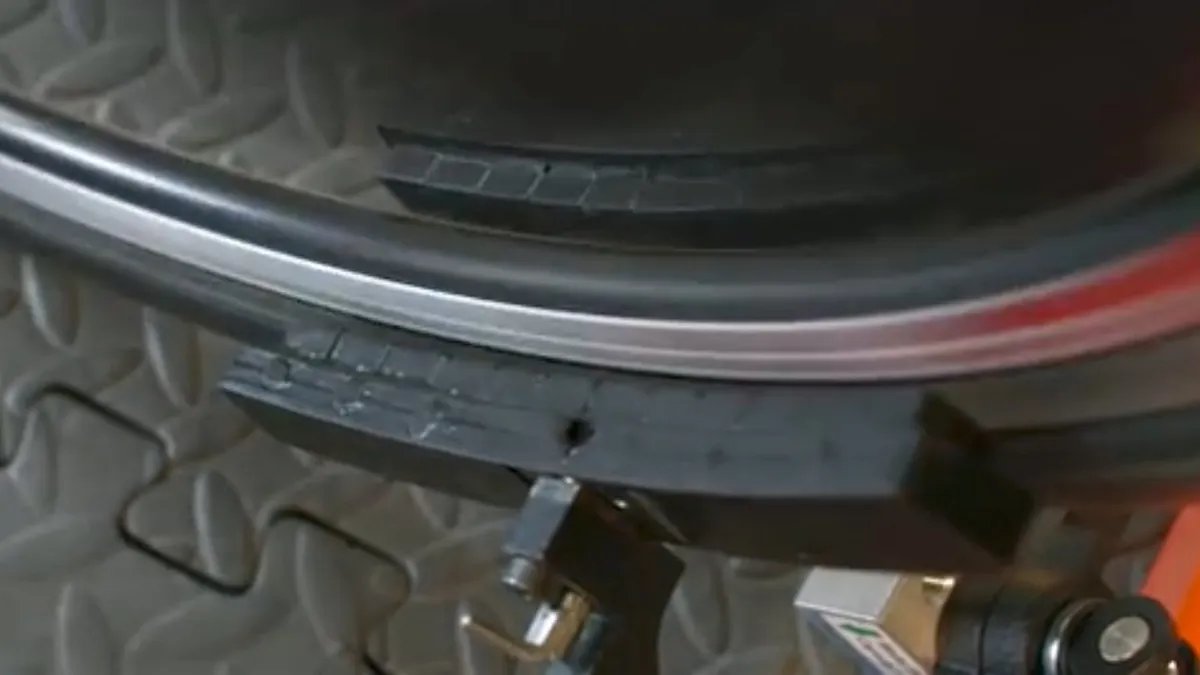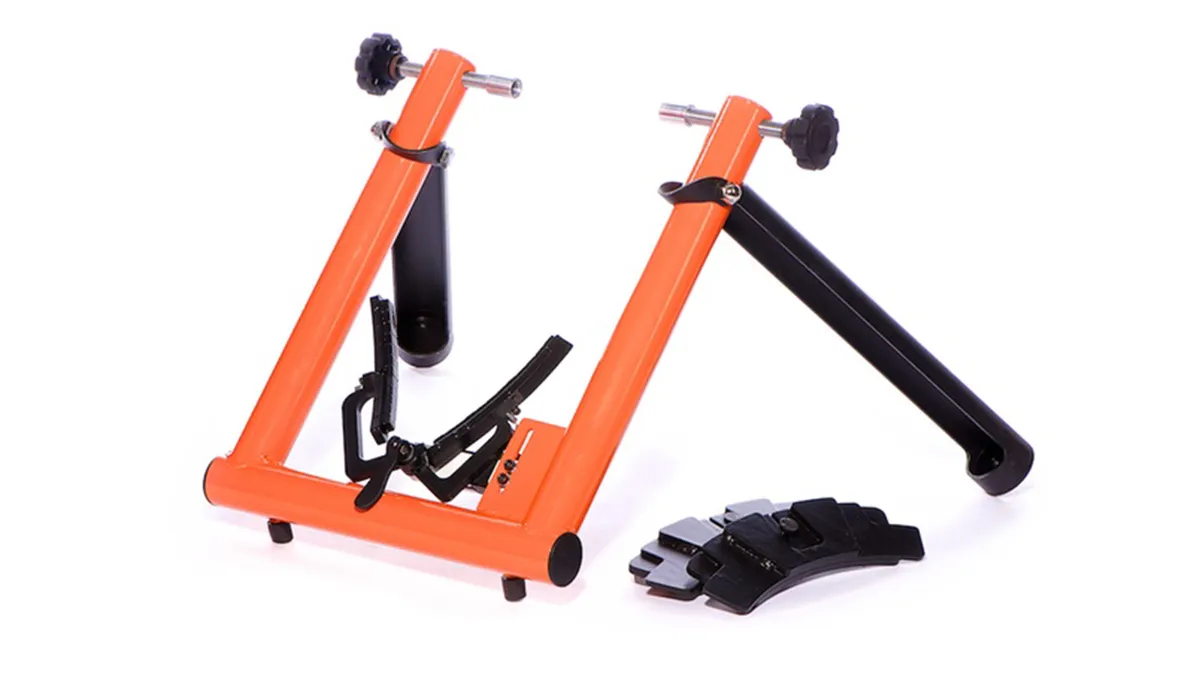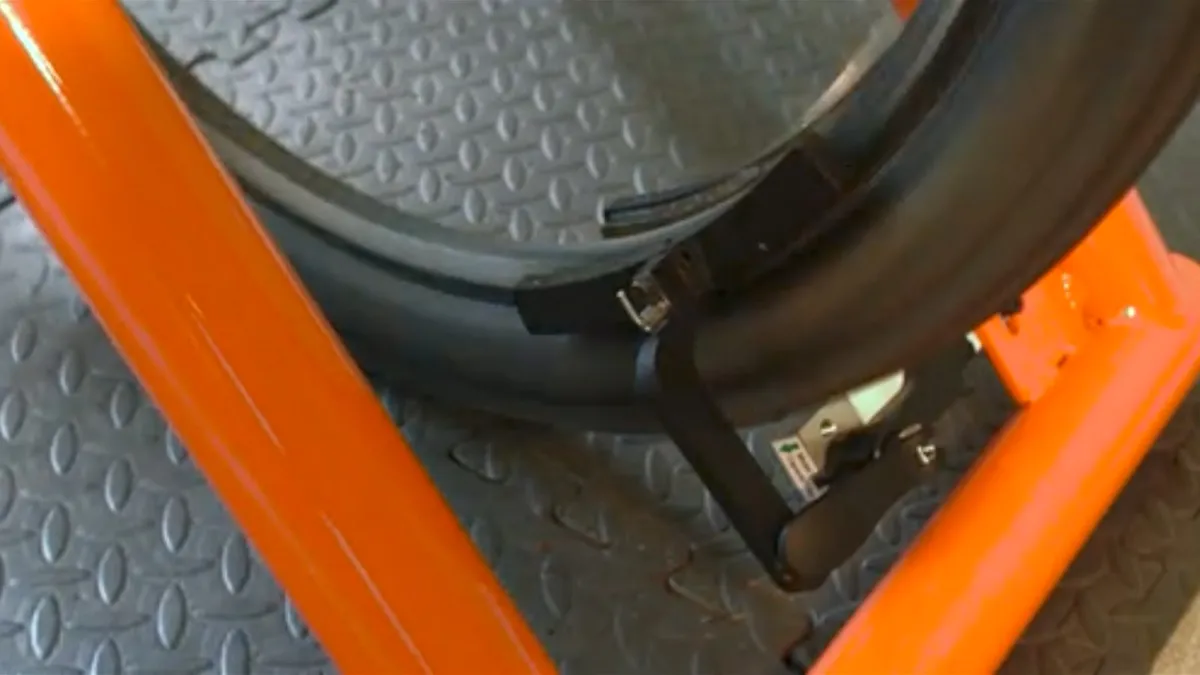Two of the biggest bugbears with turbo trainers may have been banished by Canadian startup STAC, which claims to have designed a model that's completely silent and won't eat up tyres.
How does it do this? By eliminating contact between wheel and turbo. Instead of using a flywheel and roller to push up against your back wheel or a direct drive system, the Zero trainer uses magnets to create resistance; STAC says the only noise comes from your drivetrain. What's more, STAC says it reached its funding goal on Kickstarter in just two days.
- The best smart trainers
- Best turbo trainers and rollers
- CycleOps evolves its smart trainers with direct-drive Hammer
Two neodymium magnets are placed either side the rim — which needs to be alloy — and as the wheel spins they create resistance. The genius of this system is that it’s not actually the magnetism that creates the resistance (alloy isn’t magnetic): instead, when an electrical conductor passes through a magnetic field, it generates a small electrical field called an eddy current.
Given that in my house there's the strict commandment that turbo trainers and rollers must not be ridden when other members of the household are trying to sleep (nor may sweaty bibshorts be left in the dirty clothes hamper, but I digress), this could be just the ticket for domestic harmony.
Check out the video below to see a demonstration of an eddy current:
Eddy currents explained
So by keeping the magnets in a constant position facing the brake track, the wheels gets a restrictive force that slows it down. STAC says the faster the wheel spins the larger the eddy current and the more resistance. The resistance level can also be tailored by the changing distance between the magnets and the wheel, as well as the number of magnets placed next to the wheel, and STAC says in theory their system is capable of generating 2,000 watts of resistance.
STAC says its eddy current resistance system will work with any alloy wheel, including rims designed for disc brakes, as well as carbon wheels with an aluminium brake track. Unfortunately full carbon rims won’t work. You'll need to mount small weights on the spokes or hub though: because road and mountain bike wheels are so light, there's no other way to create that ‘real road feel’ created through friction by a heavy flywheel on a standard trainer.

The magnets are housed in a ‘caliper’ that looks a lot like a rim brake caliper, and STAC says it can accommodate both road and mountain bikes. Despite this system seeming almost magical in the way it creates resistance, it’s still governed by the laws of physics, specifically Newton's first law. That's the the law of inertia: an object at rest stays at rest and an object in motion stays in motion with the same speed and in the same direction unless acted upon by an unbalanced force.
There are two version of the STAC Zero trainer, the latter featuring a small Bluetooth and ANT+ enabled pod which tracks a standard speed magnet mounted on your wheel, to determine speed and power. While the specific details on how the trainer makes this calculation are a little vague, STAC says: “The power meter is actually so simple and efficient that a pair of AA batteries can power it for hundreds of hours, and it’s incredibly accurate, tracking extremely well with every power meter used for validation.”
The power pod will also be available as an upgrade for those who purchase the standard trainer, but decided they want the power down the track.

With no bulky flywheel or fluid resistance unit, the Zero trainer can also fold completely flat for easy storage.The STAC Zero trainer will retail for CAD$399 or CAD$499 with power, though there are still a few early bird packages available.
For more info check out the STAC Zero Kickstarter page.


